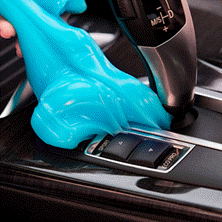staff@slashgear.com (Dave Goldberg)
2025-06-06 18:15:00
www.slashgear.com

EcoBoost engines have been integral to Ford’s lineup since the 2010 model year, with engines like the 3.0-liter EcoBoost powering a range of Ford vehicles, including the Explorer ST and Bronco Raptor. Like any engine, using fuel with a recommended octane rating is essential to keep an EcoBoost running smoothly. But it’s also important to remember that using premium fuel when it’s not necessary is a waste of money.
Advertisement
In May 2025, the average difference between regular and premium gasoline was $0.94 per gallon, as reported by the U.S. Energy Information Administration (EIA). At those prices, filling up an empty 18-gallon fuel tank with high-octane gas costs $16.92 extra, which works out to nearly $880 annually, assuming weekly stops at the pump. For context, the EIA categorizes regular-grade fuel as having an octane rating of 87, while mid-grade ranges from 89 to 91 octane. Premium fuel, meanwhile, has an octane rating of 91 to 94.
We’ve compiled information on the fuel octane ratings required across a broad spectrum of EcoBoost engines ranging from three to six cylinders. These turbo powerplants are used in numerous newer Ford models, including the F-150, Escape, Bronco Sport, and Maverick, and appeared in discontinued models like the Fusion and Fiesta. All will run on regular, but Ford recommends premium gas for the best performance.
Advertisement
V6 EcoBoost fuel requirements
The largest EcoBoost engine Ford offers is the 3.5-liter V6. Among 2025 Fords, it’s found in the Expedition and F-150, making 400 to 440 hp, depending on the model and trim. A detuned version making 310 hp is optional in the Transit van. Ford recommends using 91-octane fuel for best overall performance, especially when towing. The downsized 3.0-liter EcoBoost V6, which is the subject of a class-action lawsuit, is also found in many newer Ford models such as the Bronco Raptor and Explorer. Like the larger 3.5-liter unit, this 400 to 418-hp engine can run on 87-octane gasoline, even in the 405-hp Ranger Raptor. Ford does state that infrequent light engine knocking is normal, an advisory that accompanies the other EcoBoost units we’re discussing.
Advertisement
A 2.7-liter unit completes Ford’s EcoBoost V6 trio. It’s available as standard or optional equipment in 2025 versions of the Ford F-150, Bronco, and Ranger, where it makes 315 to 330 hp. Ford says that 87-octane gasoline is acceptable for this engine, but premium gas is the best fuel for maximum performance. All V6 EcoBoost engines have twin turbochargers.
Three- and four-cylinder EcoBoost fuel requirements
Ford also uses multiple smaller EcoBoost engines (which all use a single turbocharger) in its cars. The four-cylinder 2.3-liter EcoBoost is the base engine in the Bronco, Explorer, and Mustang, with output between 300 to 315 hp. Meanwhile, Ford offers the four-cylinder 2.0-liter EcoBoost, which makes 250 hp, in higher-trim versions of the Escape, Bronco Sport, and Maverick. The smallest EcoBoost currently sold in the U.S. is the three-cylinder 1.5-liter engine, which produces 180 hp in the Escape and Bronco Sport. Like their V6 EcoBoost counterparts, Ford recommends 87-octane gasoline at a minimum, with drivers getting better performance if they fill the tank with at least 91-octane premium.
Advertisement
Ford also has many now-discontinued models that once used EcoBoost engines. Starting in 2014, the Fiesta’s engine lineup included a three-cylinder 1.0-liter and a four-cylinder 1.6-liter EcoBoost, depending on the year. In 2015, Ford added the 1.0-liter EcoBoost to the Focus’s engine bay, with EcoBoost options expanding two years later to include 2.0- and 2.3-liter units. The first EcoBoost debuted in the Fusion for the 2013 model year — the launch of the second generation — in 1.6- and 2.0-liter forms. A four-cylinder 1.5-liter EcoBoost was added a year later. In 2017, Ford added twin-turbo 2.0-liter four-cylinder and 2.7-liter V6 EcoBoosts to the options list. Once again, the octane requirements for these historical models were the same as current EcoBoost vehicles: at least 87 octane, but 91 was better.
Advertisement

PULIDIKI Car Cleaning Gel Universal Detailing Kit
Make car cleaning effortless with the PULIDIKI Car Cleaning Gel Universal Detailing Kit, a simple yet effective solution for keeping your vehicle spotless. With over 89,741 ratings and an impressive 4.1-star average, it’s no wonder this kit is a highly rated Amazon Best Seller.
Loved by over 40,000 buyers in just the past month, it’s an unbeatable deal for only $6.99. Perfect for cleaning those hard-to-reach areas, this detailing gel is a must-have for car enthusiasts. Order now for just $6.99 at Amazon!
Help Power Techcratic’s Future – Scan To Support
If Techcratic’s content and insights have helped you, consider giving back by supporting the platform with crypto. Every contribution makes a difference, whether it’s for high-quality content, server maintenance, or future updates. Techcratic is constantly evolving, and your support helps drive that progress.
As a solo operator who wears all the hats, creating content, managing the tech, and running the site, your support allows me to stay focused on delivering valuable resources. Your support keeps everything running smoothly and enables me to continue creating the content you love. I’m deeply grateful for your support, it truly means the world to me! Thank you!
|
BITCOIN
bc1qlszw7elx2qahjwvaryh0tkgg8y68enw30gpvge Scan the QR code with your crypto wallet app |
|
DOGECOIN
D64GwvvYQxFXYyan3oQCrmWfidf6T3JpBA Scan the QR code with your crypto wallet app |
|
ETHEREUM
0xe9BC980DF3d985730dA827996B43E4A62CCBAA7a Scan the QR code with your crypto wallet app |
Please read the Privacy and Security Disclaimer on how Techcratic handles your support.
Disclaimer: As an Amazon Associate, Techcratic may earn from qualifying purchases.













































































![Unidentified Flying Object (UFO) by BryGuy [Official Lyric Video]](https://techcratic.com/wp-content/uploads/2025/06/1749249459_maxresdefault-75x75.jpg)